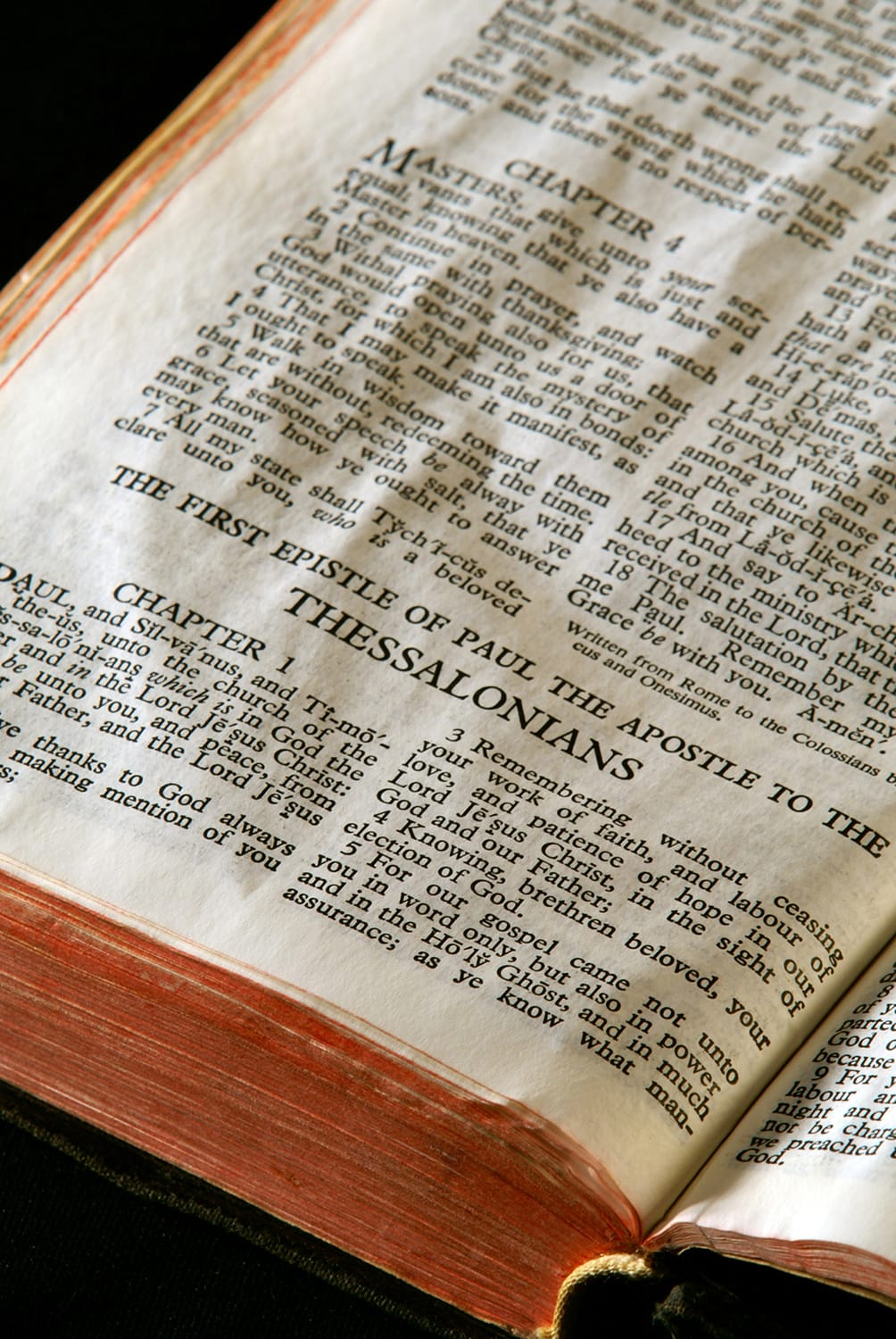Paul the Person
Saul or Paul: What’s in a Name?

Saul is a Jewish name, harkening back to the first king of Israel (1 Samuel 9:15-17). Its meaning is “asked of God” in Hebrew. Paul was thoroughly Jewish. Until his conversion, his primary identity was found in his Jewish roots. He likely went by Saul with his family and his peers. Yet, as a Roman citizen the apostle would have also taken a name which associated with the Roman culture.
Luke refers to the apostle as Saul until the first missionary journey, where a change is noted in the text of Acts. On the other hand, in his own writings the apostle always refers to himself by his Latin name Paul. Why would Luke initially use the name “Saul” while the apostle always referred to himself as “Paul”?
Some have proposed that God changed Saul’s name at conversion to indicate the different man that he had become. A careful study of Acts shows that this is not necessarily the case. The apostle is referred to as Saul multiple times following his conversion and it is only later in the text when this change occurs.
The answer to this question is likely found in the fact that all of the writings we have from Paul post-date the first missionary journey. Luke notes the change in his text, probably indicating that Paul made the change himself. Speaking to a Roman proconsul in Cypress on the first missionary journey was an excellent occasion to emphasize his Roman heritage. Subsequent encounters with new Gentile converts in the months that followed may have cemented the changeover.
We have other scriptural examples of men using both Hebrew and Latin names.
Hebrew
Greek
We see evidence of God’s providence in the naming of the apostle. God utilizes Paul’s Jewish and Roman background together in the missionary calling he gives to the apostle.
Paul’s Missionary Journeys
The apostle Paul traveled on three missionary journeys, recounted by Luke in the book of Acts. Paul walked over 10,000 miles during the course of his ministry. He was imprisoned, shipwrecked and beaten. He witnessed remarkable miracles and built deep relationships with people throughout the Roman Empire.
First Missionary Journey
Several years after Paul became a Christ follower on the road to Damascus, a leader in the church named Barnabas found Paul. Barnabas asked him to come to Antioch, so Paul joined the leadership team in that city. Several years later, the church sent out Paul and Barnabas on a missionary journey (Acts 13:1-6).
This dynamic duo visited numerous cities. Here are some of the highlights from this trip.
- Paul and Barnabas began on the island of Cyprus. Barnabas was from this island originally, and he likely had family and friends there. The Roman proconsul Sergio Paulus followed Christ as a result of their testimony.
- The apostles then traveled to the mainland of modern-day Turkey. They headed toward Pisidian Antioch likely because Sergio Paulus had relatives there.
- Paul and Barnabas then ministered in four cities: Pisidian Antioch, Iconium, Lystra and Derbe. The cities were located in the southern part of the Roman province of Galatia. Many scholars believe that the letter to the Galatians was written to these churches.
Paul and Barnabas made it their habit to visit the synagogue in a city first. God had already prepared people for the message of the gospel through the Old Testament. Yet, the message they brought often caused strong reactions. In Iconium, those who opposed them attempted to stone them. And in Lysta, the people attempted to worship them as Greek gods. Acts 13:7 - 14:26 records the details of this journey.
Jerusalem Council
Immediately upon return, Paul and Barnabas recounted the stories of their experiences to fellow believers in Antioch. Some responded with great delight at the news of Gentiles following Jesus. Others, however, were very concerned about how a Gentile convert would follow Jesus. They had many logical questions.
- Did a Gentile follower of Jesus need to keep the Jewish dietary laws?
- Should a Gentile convert be circumcised according to the Abrahamic covenant?
- What about the need to worship or sacrifice in the Jewish temple?
Early Christ followers were Jewish. They conceived of Jesus as a Jewish Messiah. Even though Jesus often confronted the Pharisees during his earthly ministry, these early Christians still perceived their faith as Jewish. When Gentiles responded to the gospel, there were two choices:
- Gentile Christ followers could become Jewish. There was provision under the Old Testament for a non-Jew to become a worshiper of YHWH. Early Christians conceived of Gentile believers being incorporated into the body of Christ in a similar way.
- Gentile Christ followers could worship Jesus without becoming Jewish. This would mean that many of the aspects of Judaism would become irrelevant to Christian worship. Many Jews expressed fear that this option would create impurities.
In Acts 15:1-30, the leaders of the church gathered in Jerusalem to discuss/debate these two options. In the end, the men who gathered decided for the second option.
Second Missionary Journey
Freshly commissioned, Paul and Barnabas agreed that a second trip was a good idea. They disagreed, however, on whether Barnabas’ cousin John Mark should rejoin them on the second trip. He had traveled only part of the way with them on the first trip. They experienced such a sharp disagreement that each decided to go on his own. Barnabas returned to Cyprus with John Mark. Paul askes Silas to join him and they traveled north by land to Paul’s hometown of Tarsus. Then they went overland to the four cities in southern Galatia where churches had been established on the first missionary journey. In Lystra and Derbe, Timothy joined with Paul and Silas for the onward journey.
After visiting the church in Pisidian Antioch, Paul and his traveling companions attempted to visit the northern regions of Galatia as well as Bithynia. Yet, the Holy Spirit continued to guide them westward toward Troas where Paul received a vision of a man in Macedonia calling him to come to Greece. The missionaries followed the supernatural call of God and visited the following European cities for the first time:
- Neapolis
- Philippi
- Amphipolis
- Apollonia
- Thessalonica
- Berea
- Athens
- Corinth
In Philippi, Paul encountered Lydia, a seller of purple fabric. He established a small church there before moving on to Thessalonica. Luke, the author of Acts, seems to have joined the missionary band in Troas and then stayed on in Philippi after they departed. This is indicated by the “we” passages in Acts.
“We “ Passage
Context
Though Paul was present in Thessalonica for a shorter period of time, his opponents were greatly stirred up. The believers pressed upon Paul to leave for Berea and then onward to Athens
In Athens, Paul encountered the idolatry so prevalent in the city. He gave testimony to the Areopagus and left for Corinth where he spent a year and a half. In Corinth, the apostle Paul worked his trade (leatherworking) along with fellow Christ followers Priscilla and Aquila.
Paul then departed for Ephesus and onward to Jerusalem, where he concluded his second missionary journey. See Acts 16:1-18 for the full account of his travels on the second missionary journey.
Third Missionary Journey
Unlike the first and second missionary journey, the narrative of Acts does not give an extensive introduction to the third missionary journey. It merely says in Acts 18:23 “having spent some time there, he left and passed successfully through the Galatian region…” Paul felt that it was very important to follow up with the churches he had established.
Paul spent a good deal of time in Ephesus. He established a training center of sorts and sent out pastors/missionaries to surrounding cities in Asia minor. He also spent several months in Corinth on the third missionary journey, and he likely took an additional trip to Corinth from Ephesus during this period (referenced in the Corinthian correspondence, though not included in Acts).
Several years later, Paul concludes his journey in Jerusalem. He is arrested in the temple. It is this incarceration which eventually lands him in Rome as a prisoner on appeal to Caesar. As Luke describes the third missionary journey, he includes more details about interpersonal interaction, abandoning his geographic emphasis in his account of the earlier missionary journeys. We receive an encouraging window into the heart of Paul as pastor and missionary which can be read in Acts 18:23-26.
